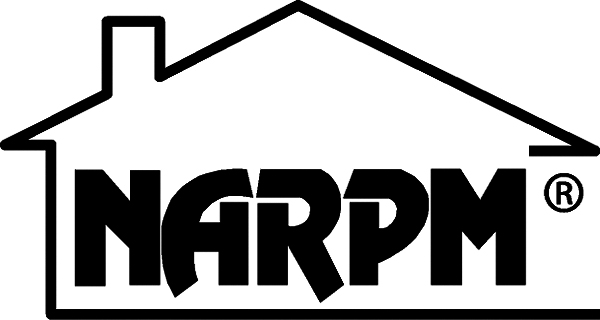Latest News
Carbon Monoxide Detector – New Requirements
Carbon monoxide detectorCarbon Monoxide Detector(s) will soon be required in most homes as a result of the Carbon Monoxide Poisoning Prevention Act that was passed earlier this year for California. This new law requires that carbon monoxide detectors to be installed in every “dwelling unit intended for human occupancy.”
Every owner of a “dwelling unit intended for human occupancy” must install an approved carbon monoxide device in each existing dwelling unit having a fossil fuel burning heater or appliance, fireplace, or an attached garage.
The applicable time periods are as follows:
1. For all existing single-family dwelling units on or before July 1, 2011.
2. For all other existing dwelling units on or before Jan. 1, 2013.
(Cal. Health & Safety Code § 17926(a).)
Common Questions & Answers
Do landlords have any special obligations regarding carbon monoxide detectors?
Yes. All landlords of dwelling units must install carbon monoxide detectors as indicated in earlier. The law gives a landlord authority to enter the dwelling unit for the purpose of installing, repairing, testing, and maintaining carbon monoxide devices “pursuant to the authority and requirements of Section 1954 of the Civil Code [entry by landlord].”
The carbon monoxide device must be operable at the time that a tenant takes possession. However, the tenant has the responsibility of notifying the owner or owner’s agent if the tenant becomes aware of an inoperable or deficient carbon monoxide device. The landlord is not in violation of the law for a deficient or inoperable carbon monoxide device if he or she has not received notice of the problem from the tenant. (Cal. Health & Safety Code § 17926.1.)
What is carbon monoxide?
Carbon monoxide is a gas produced whenever any fuel, such as gas, oil, kerosene, wood, or charcoal, is burned. A person cannot see or smell carbon monoxide. However, at high levels carbon monoxide can kill a person in minutes.
In addition, there are well-documented chronic health effects of acute carbon monoxide poisoning from exposure to carbon monoxide, such as lethargy, headaches, concentration problems, amnesia, psychosis, Parkinson’s disease, memory impairment, and personality alterations. (Cal. Health & Safety Code § 13261.)
What is a carbon monoxide detector?
It is a relatively inexpensive device similar to a smoke detector that signals detection of carbon monoxide in the air. Under the law, a carbon monoxide device is “designed to detect carbon monoxide and produce a distinct audible alarm.” It can be battery powered, a plug-in device with battery backup, or a device installed as recommended by Standard 720 of the National Fire Protection Association that is either wired into the alternating current power line of the dwelling unit with a secondary battery backup or connected to a system via a panel.
If the carbon monoxide device is combined with a smoke detector, it must emit an alarm or voice warning in a manner that clearly differentiates between a carbon monoxide alarm warning and a smoke detector warning.
The carbon monoxide device must have been tested and certified pursuant to the requirements of the American National standards Institute (ANSI) and Underwriters Laboratories Inc. (UL) as set forth in either ANSI/UL 2034 or ANSI/UL 2075, or successor standards, by a nationally recognized testing laboratory listed in the directory of approved testing laboratories established by the Building Materials Listing Program of the Fire Engineering Division of the Office of the State Fire Marshal of the Department of Forestry and Fire Protection. (Cal. Health & Safety Code § 13262.)
How many devices and where do I place them in the home?
This new law requires the owner “to install the devices in a manner consistent with building standards applicable to new construction for the relevant type of occupancy or with the manufacturer’s instructions, if it is technically feasible to do so” (Cal. Health & Safety Code § 17926(b)).
The following language comes packaged with carbon monoxide (CO) detectors:
For minimum security, a CO Alarm should be centrally located outside of each separate sleeping area in the immediate vicinity of the bedrooms. The Alarm should be located at least 6 inches (152mm) from all exterior walls and at least 3 feet (0.9 meters) from supply or return vents.
Building standards applicable to new construction are as follows (overview summary only):
* Section R315 et seq. of the 2010 edition California Residential Code (CRC) [effective Jan. 1, 2011] (applicable to new one-to-two family dwellings and townhouses not more than 3 stories and also where work requiring a permit for alterations, repairs or additions exceeding one thousand dollars in existing dwellings units):
Installed outside of each separate sleeping area in the immediate vicinity of the bedroom(s) in dwelling units and on every level including basements within which fuel-fired appliances are installed and in dwelling units that have attached garages.
* Section 420 et seq of the 2010 edition California Building Code (CBC) [effective Jan. 1, 2011] (applicable to other new dwelling units and also where a permit is required for alterations, repairs or additions exceeding $1,000 in existing dwelling units):
Installed outside of each separate sleeping area in the immediate vicinity of the bedroom(s) in dwelling units and on every level including basements within which fuel-fired appliances are installed and in dwelling units that have attached garages.
Are there any penalties for noncompliance with this law regarding installation of carbon monoxide detector devices?
Yes. A violation is an infraction punishable by a maximum fine of $200 for each offense. However, a property owner must receive a 30-day notice to correct first. If an owner who receives such a notice fails to correct the problem within the 30-day period, then the owner may be assessed the fine. (Cal. Health & Safety Code § 17926(c).)
Can a buyer of a “dwelling unit intended for human occupancy” rescind the sale if the dwelling doesn’t have the necessary carbon monoxide detectors?
No. However, the buyer may be entitled to an award of actual damages not to exceed $100 plus court costs and attorney’s fees. (Cal. Health & Safety Code § 17926(d).)
When selling a home, the following language has now been added to the mandatory Real Estate Transfer Disclosure Statement that both seller and buyer sign:
Installation of a listed appliance, device, or amenity is not a precondition of sale or transfer of the dwelling. The carbon monoxide device, garage door opener, or child-resistant pool barrier may not be in compliance with the safety standards relating to, respectively, carbon monoxide device standards of Chapter 8 (commencing with Section 13260) of Part 2 of Division 12 of, automatic reversing device standards of Chapter 12.5 (commencing with Section 19890) of Part 3 of Division 13 of, or the pool safety standards of Article 2.5 (commencing with Section 115920) of Chapter 5 of Part 10 of Division 104 of, the Health and Safety Code. Window security bars may not have quick-release mechanisms in compliance with the 1995 edition of the California Building Standards Code.
What are the symptoms of carbon monoxide exposure?
Flu-like symptoms which can include:
* Nausea
* Fatigue
* Headaches
* Dizziness
* Confusion
If you are experiencing breathing difficulty,
* Call 911 immediately.
* Evacuate the premises.
* Do not re-enter the premises until the problem is corrected.
If you are not experiencing flu-like symptoms and have concerns:
* Ventilate the premises
* Turn off all fuel-burning appliances
* Call SDG &E at 1-800-411-7343. They will come to the home and inspect the premises for sources of Carbon Monoxide. Until the problem is corrected, do not restart the appliances but continue to ventilate.
Source: Portions of this article come from a California Association of REALTORS® publication.
_____________________________________________________________________________
Renters Insurance
Though the acquisition of renters' insurance is ultimately your tenants' responsibility, as a landlord it's important that you have an understanding of what it is and why it's important, both for your own well-being and for your tenants'.
Make Tenants Aware
Your tenants should be aware that in the case of a destructive event at your property (fire, natural disaster, theft, etc.), existing property insurance will only protect your actual property. In other words, tenants' possessions and personal belongings are not covered.
Your Benefit
Some property managers build a clause into their lease stating that renters are obligated to purchase renters' insurance for the duration of their occupancy. In cases where a tenant without renters' insurance is sued by a third party who is injured in their apartment, you can be included in the lawsuit and are not covered if the tenant does not carry insurance.
Tenants' Responsibility
If you choose not to include renters' insurance as a lease requirement, you should still make a point of informing renters that they are responsible for insuring their own personal belongings, both verbally upon lease signing and in the actual lease text.
______________________________________________________________________________________________

Trinity management is proud to announce we are now a part of the National Association of Residential Property Managers!
We offer our Property Management, Vacation Rental and Second Home / Vacant Home watch services for absentee homeowners to San Diego's North County area in:
Cardiff, Cardiff by the Sea, Carlsbad, Carmel Valley, Del Mar, Encinitas, Fairbanks Ranch, La Costa, Leucadia, North County, Olivenhain, Pacific Highlands Ranch, Rancho Santa Fe, San Diego, San Elijo Hills, San Marcos, Solana Beach
92007, 92008, 92009, 92010, 92011, 92014, 92024, 92067, 92075, 92091, 92130, 92069, 92078
If you have any questions feel free to contact us at info@trinity-propertymanagement.com or call us today at 760-487-1130.

